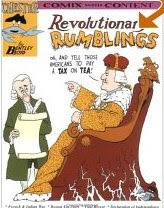Last Mohicans 1
a link to marvel's teacher's guide
The Mohicans were related to the Lenape Indians who inhabited Manhattan prior to the arrival of the Dutch. About the Mohicans
The Mahicans (also Mohicans) are an Eastern Algonquian Native American tribe, originally settling in the Hudson River Valley (around Albany, NY). After 1680, many moved to Stockbridge, Massachusetts. During the early 1820s and 1830s, most of the remaining descendants migrated westward to northeastern Wisconsin. The tribe's name for itself (autonym) was Muhhekunneuw, or "People of the River." Their current name is the name applied to the Wolf Clan division of the tribe, from the Mahican manhigan.
The Mahican were living in and around the Hudson Valley at the time of their first contact with Europeans in 1609, who were mostly Dutch. Over the next hundred years, tensions between the Mahican and the Iroquois Mohawk, as well as Dutch and English settlers, caused the Mahican to migrate eastward across the Hudson River into western Massachusetts and Connecticut. Many settled in the town of Stockbridge, Massachusetts, where they became known as the Stockbridge Indians.
The Stockbridge Indians allowed Protestant Christian missionaries, including Jonathan Edwards, to live among them. In the 18th century, many converted to Christianity, while keeping certain traditions of their own. Although they fought on the side of the American colonists in both the French and Indian War (North American part of the Seven Years' War) and the American Revolution, citizens of the new United States forced them off their land and westward. First the Stockbridge settled in the 1780s at New Stockbridge, New York, on land allocated by the Oneida, of the Iroquois Confederacy.
In the 1820s and 1830s, most of the Stockbridge moved to Shawano County, Wisconsin, where they were promised land by the US government. In Wisconsin, they settled on reservations with the Munsee. Together, the two formed a band jointly known as Stockbridge-Munsee. Today the reservation is known as that of the Stockbridge-Munsee Band of Mohican Indians (Stockbridge-Munsee Community).
Moravian Church missionaries from Bethlehem in present-day Pennsylvania founded a mission at the Mahican village of Shekomeko in Dutchess County, New York. They wanted to bring the Native Americans to Christianity. Gradually they were successful in their efforts, converting the first Christian Indian congregation in the United States. They built a chapel for the people in 1743. They also diligently defended the Mahican against European settlers' exploitation, trying to protect them against land encroachment and abuses of liquor. Some who opposed their work accused them of being secret Catholic Jesuits (who had been outlawed from the colony in 1700) and of working with the Indians on the side of the French. The missionaries were summoned more than once before colonial government, but also had supporters. Finally the colonial government at Poughkeepsie expelled the missionaries from New York in the late 1740s. Settlers soon took over the Mahican land.
The now extinct Mahican language belonged to the Eastern Algonquian branch of the Algonquian language family. It was an Algonquian N-dialect, as were Massachusett and Wampanoag. In many ways, it was more similar to, and just as easily considered one, of the L-dialects, such as that of the Lenape.








